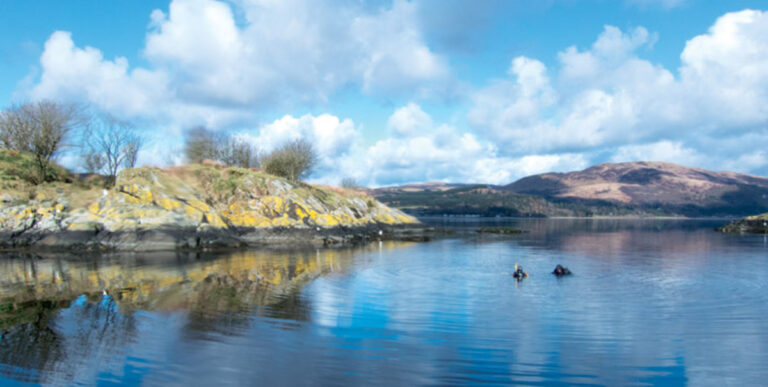Diving early in the season can be a lottery. Much is down to luck, but it pays to pick your dive site wisely. Mark Davies took a chance with an early-season trip to Loch Fyne, and reckons he won the jackpot. Pictures by Brett Thorpe

IF YOU LIVE NEAR THE COAST, have access to a boat and can take advantage of favorable conditions at short notice, there is no reason why you shouldn’t dive all year round. But for those of us who don’t enjoy such advantages, it’s a different proposition.
When having to travel away for a weekend and chartering a boat weeks or months in advance, you gamble on the weather being right.
It can be frustrating but, as for punters at the races, when your horse finally comes in all those previous losses make the win that much sweeter.
For divers like us, the good days feel really good. Of course, you still want to avoid blown-out trips if you can, and in practical terms this means a few months off in the winter keeping the skills up at inland sites.
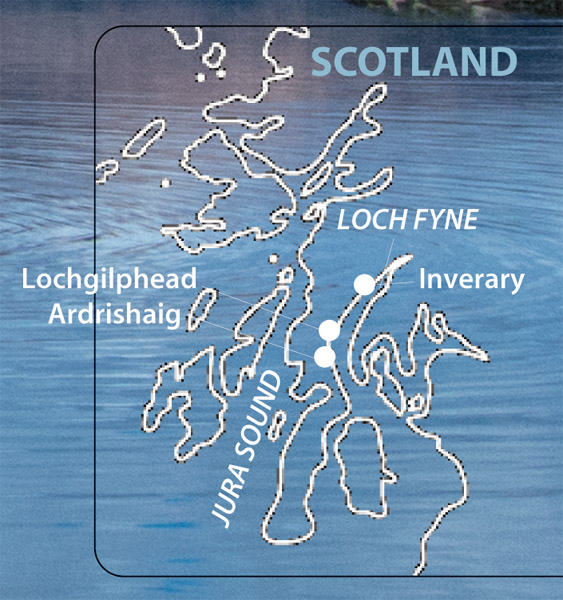
For many divers the season still starts around the Easter bank holiday, by when weather conditions should have improved enough to provide a good chance of a decent weekend’s diving.
In recent years spring seems to have arrived earlier and earlier, so we decided that it might pay to plan a trip for March and get a bit of a jump on the season.
The odds can be much-improved by selecting a location that’s sheltered and likely to provide diving in most conditions, and for us that usually means Scotland’s west coast.
We normally kick off our season in the Sound of Mull, but we fancied a change this year, so when the opportunity arose to join a trip to Loch Fyne, it seemed ideal.
It was one of the few places in the UK that I had not dived before, but my buddy for the trip had visited the loch numerous times with her club, and thought it would prove an ideal season-opener.
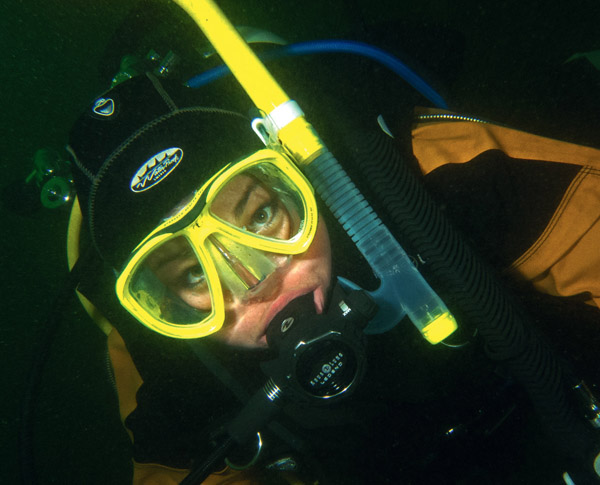
LOCH FYNE, TO THE SOUTH-WEST of Argyll, is Scotland’s longest sea loch. It stretches more than 40 miles inland from the Sound of Bute.
It’s famous as a source of sea food, especially oysters, so the surrounding area boasts some fine fish restaurants as well as the spectacular, world-class scenery that you would associate with the west coast of Scotland.
Towards its southern end the loch is connected to the Sound of Jura by the Crinan Canal. This once allowed shipping from Glasgow and the Clyde to head north and access the Inner Hebrides and the Sound of Mull without having to first make its way around the Kintyre peninsula.
Otherwise Loch Fyne has never been a major shipping route, so is less rich in shipwrecks than other locations in the area.
It makes up for this in terms of sea life and scenic diving, and the rugged hills surrounding the coastline provide not only a beautiful backdrop but also excellent shelter. You can expect diveable conditions somewhere on the loch whatever the weather.
We drove north on a Friday in mid-March in questionable weather, though with a much better weekend forecast.
Passing through Inverary, the largest settlement on the shores of the Loch and the home of one of Scotland’s finest whisky retailers, provided a chance to stock up on single malts.
While there we were offered a diving commission to check the owner’s nearby boat mooring, with a further bottle proffered as payment. Unfortunately we didn’t have the time to oblige, so that job may still need doing.
We reached our accommodation in the small port of Ardrishaig on Loch Fyne’s north bank, just south of Lochgilphead and the entrance to the Crinan Canal.
It was cloudy and drizzling but winds were light, and we could cope with a little rain. Our early-season gamble looked set to pay off.
And the next morning we were greeted with clear blue skies and barely a breath of wind. Our numbers had come in!
Various charter-boats operate on the loch and we chose Fyne Pioneer, skippered by Simon Exley. His 10m Humber RIB has a top speed of 45 knots, promising fast trips to the dive sites.
I normally prefer hard-boats because my dodgy back can make RIBs hard work, but the Fyne Pioneer has a ladder, tank-racking, seating and space, so there were no problems there.
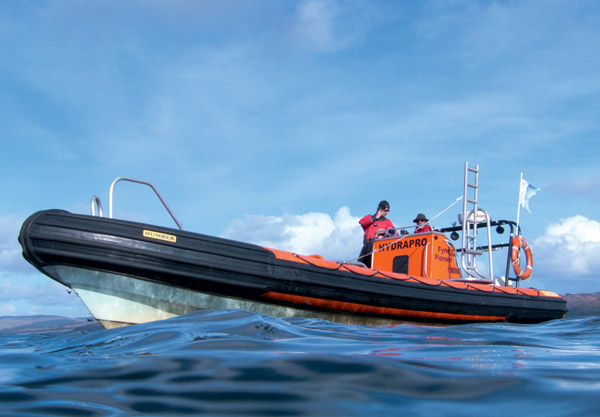
IT WAS A SHORT DRIVE to the free car park by the slipway, and while waiting for the boat we set up our kit. We were using single tanks for this first sea trip of the year, though some divers aboard had opted for twins, and there was a rebreather too.
Simon and his crew are happy to let divers dekit in the water and lift their rig onto the boat if required.
There was plenty of room for the 10 divers booked aboard.
We headed to our first dive site, the twin 200hp Evinrude engines propelling us enthusiastically over the calm surface as we savored the scenery beneath azure skies.

One of the wrecks the Loch does have to offer is the Margaret Niven. This 19m, 24-tonne puffer sank in 1908 after hitting a reef near Barmore Island, and today sits upright and mostly intact in about 30m of water.
Winches and bollards can be found at the bow, and the rudder and propeller are still in place at the other end. The hold is full of stone chips that had been destined for road construction.
We also found that the rock pinnacle that had sealed the Margaret Niven’s fate was covered with life, making for a delightful dive in its own right.
The bright sunlight above provided great visibility in which to examine crannies populated by various species of crab and squat lobster.

I saw one of the largest edible crabs I have encountered, one that would have fed a family of four, but as usual I left it to live another day.
PORTAVADIE MARINA was constructed to build oil rigs, but never used for that purpose. Today it offers yacht-owners modern holiday accommodation, a spa and restaurant.
A bunch of divers in dripping drysuits was not the usual clientele for the restaurant, nor was the a la carte menu normal surface-interval fare, but we enjoyed the fine weather as we were served haggis fritters in a whisky cream sauce on the terrace.
Close to the Margaret Niven lies the Arran III, a 49-tonne steamship that ran aground and sank on New Year’s Eve, 1932. The wreck is very broken but lies in just over 10m of water, so makes an excellent second dive.
There are little more than ribs and plates in evidence, but there is plenty to rummage around and look under. As on the first dive we found a proliferation of crustaceans and anemones, though the fish-life there was sparse.

As we returned to port, Simon’s echo-sounder located a pinnacle about 7m below the surface. He had come across it before, and wondered whether it would make a decent dive site.
He asked if anyone was interested, and as I had enough air left in my tank I decided to go with a buddy and take a look.
Brittlestars formed what I can only describe as a carpet. In their entwined black arms I saw a sea hare, and pointed it out to my buddy. Then I saw another, then another and after that many more – it was a thriving sea-hare colony.
We had seen enough to report that this was a mark worth saving.
If conditions for our first day’s diving had been good, the dawn of the second felt like a five-horse accumulator. We could scarcely believe that it was mid-March as we made our way to the slipway to find the surface of the loch shimmering like a mirror.
Only the wind-chill on our faces as the Fyne Pioneer sped along reminded us that we were barely out of winter.
WE APPROACHED the two small islands of Fraoch Eilean and Eilean Aoghainn in the bright morning sunshine.
A low mist still clung to the loch’s surface, but we could see an archetypal Scottish castle on the far shore. Two seals were cavorting in the water, while a flock of Canada geese stretched their wings on the islands.
My buddy and I waited for the other divers to get into the water before kitting-up, so that we could spend a few moments of quiet enjoying our surroundings. Scotland cleanses the soul.
We waited in a gully for a while, hoping that the seals would join us, but they were not in a curious mood.
Now we began a circuit of the islands heading south, and again enjoyed rocky, anemone-covered reefs crammed with life. Evident here, as on all our dives, were edible, hermit, spider and velvet swimming crabs in abundance.
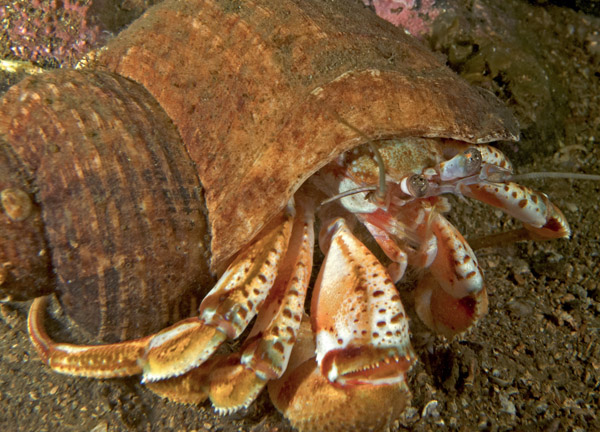
Squat lobsters lurked in every crack, and dogfish were happy to lie still and be observed. We even spotted a few nudibranchs.
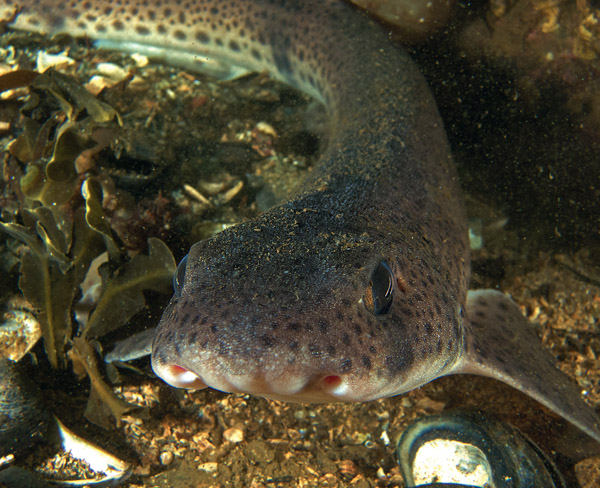
We later returned to the pinnacle we had explored the previous day, and in addition to the brittlestars and sea-hares discovered a beautiful garden of plumose anemones.
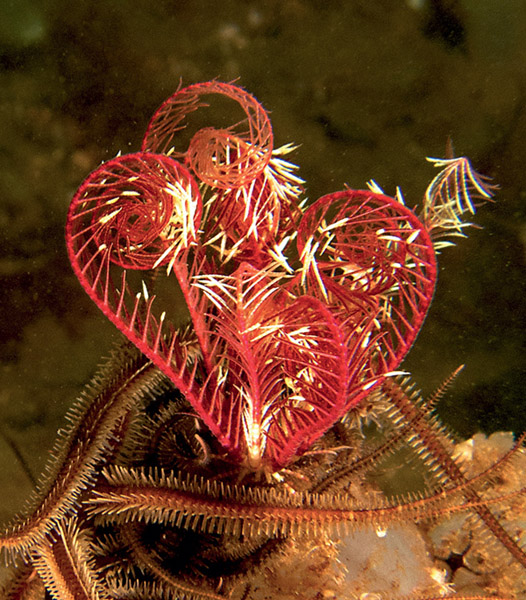
Our early-season gamble had paid off. There are no guarantees, but studying the form can improve your chances, and every now and then a good tip will come your way.
So if you’re looking for a punt early or late in the season, when the going is uncertain, my advice is to put your money on outside favorite Loch Fyne.
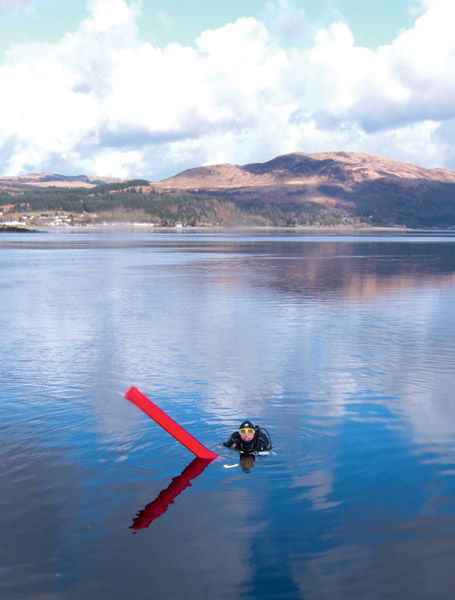
Fyne Pioneer provides custom charters from £450 per day or £250 per half-day for groups of up to 12, but individual divers can check for spaces. Visit Fyne Pioneer website
